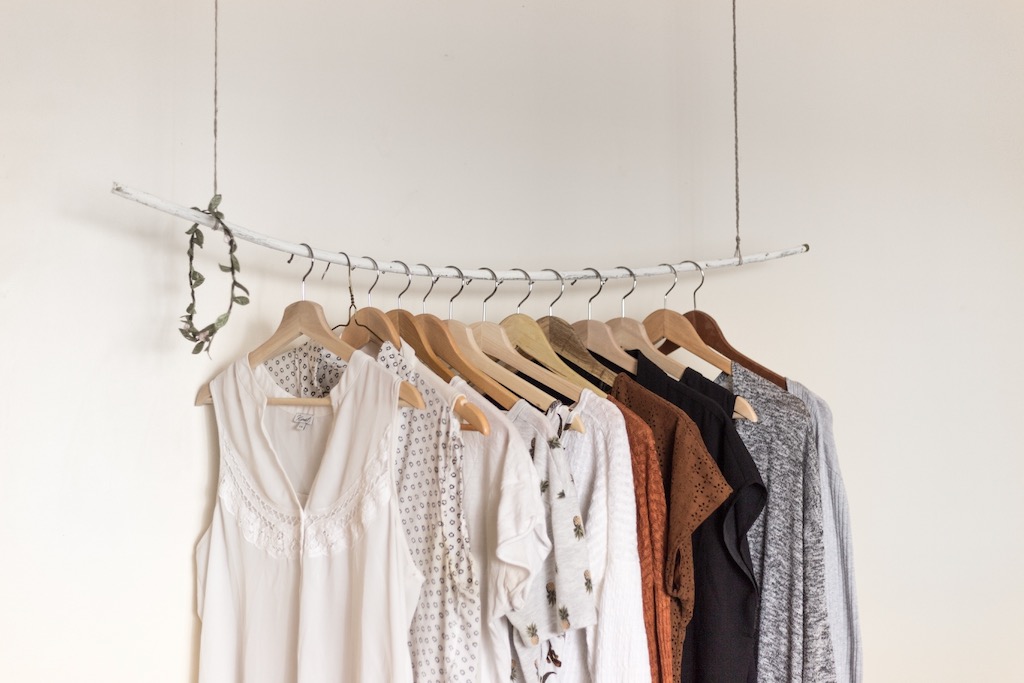Minimalists were like the Amish. I was weirdly drawn to them even though I never wanted to share their lifestyle. But the more I read, studied and embraced minimalism myself, the more I realized that they were on to something. I dipped my toe in minimalism a few years ago and made the plunge in January. As much as I love to research, I wanted a quick guide that would help me get started right away. This is the minimalist guide I wished I had. The best of my 6 months of reading, researching, and doing.
Why
I love this caricature of minimalism…
“At its core, minimalism is a luxurious lifestyle. It’s not about being so poor that you have the inability to have things. That’s poverty. It’s more about being so rich that you can afford to live like a poor person.”
Awaken with JP
Why would anyone choose this? Because they feel overwhelmed by the wrong things.
“I hate the state of my house. I don’t enjoy being in there. I’m tired of spending so much time and effort on cleaning and maintaining. I feel like an observer rather than a participant in my life. I want to truly own my life. I want more time for ___________ (family, career, hobby, rest, etc.). I feel like I’m on a hamster wheel. I’m expending a lot of energy but I’m not heading where I want to go.”
When you misunderstand minimalism, you think it’s about what you’re removing. But minimalism is about what you keep.
“Minimalism is the intentional promotion of the things we most value and the removal of anything that distracts us from it.”
Joshua Becker
People become minimalists because there’s something they want to focus on. They’ve realized that “having it all” results in “taking care of it all.” They’re willing to abandon the former to enjoy what matters.
How do you embrace minimalism?
Craft your why. Reduce your possessions. Maintain your minimalism.
Craft Your Why
Minimalism takes a lot of effort initially, but it reduces effort eventually. Because we live in a materialistic society, becoming a minimalist is going to feel like you’re swimming upstream. Eventually you’ll start to feel like you’re in a different river all together. But you need a powerful way to keep you motivated when things get tough. Take a look at some old reasons for keeping things:
- “Because I bought it.”
- “Because I have room for it.”
- “Because they gave it to me.”
- “Because it’s useful.”
- “Because I like it.”
- “Because I might need it one day.”
Throw those “why’s” away. They led to your current feeling of overwhelm. They’ve stolen enough of your time and attention. They’ve distracted you from what matters.
Now, what do you want to feel when you walk inside your home? What do you want to do? What don’t you want to do? What do you value in a home? Who lives with you? Does your home serve them as much as you? What memories do you want to create here?
Reduce your “why” to a sentence, then bravely commit to a minimalist experiment. To paraphrase Joshua Becker, we’ve lived most of our life with too many possessions. It may take a period of living with too little to teach us how much is “just right” (Uncluttered Course lecture). You’ll never know until you try. Commit to ruthlessly eliminate every object that doesn’t serve your why. You may love coffee cups. You may genuinely love every coffee cup you own. But do you love your cupboard jammed full of coffee cups? Go without for a season and see if it contributes to the life you want to live.
Reduce Your Possessions
If you’re ready for a permanent change, pick a place to donate, invest in some trash bags and get to work. If you’re worried you may regret purging, simply box up items, stick them in the garage and revisit them in a month. The benefit of the first method is that you only have to touch an item once and when it leaves your house you never have to manage it again. The benefit of the second method is that you can make quicker decisions knowing that if you chose wrongly, you’ll have a month to change your mind.
You can go category by category (clothes, kitchen, electronics, etc.) or room by room. Start easy and build towards your Everest. You’ll get better as you go.
Maintain Your Minimalism
This one deserves a whole post but simply said, we live in a materialistic society and you need to watch what you purchase and receive. Before you bring an item into your home, ask the questions “”do I need this?” and “what is this item’s clutter cost?” If you like the current state of your house, consider donating an item for every new item that comes in.
Where do I start?
Start anywhere! Start with a drawer, start with your closet, clear off your kitchen counters. You really can start anywhere.
It’s not a challenge to start. It’s a challenge to keep going. So I recommend that you get inspired! Read and follow others who embrace minimalism in part or in whole. You don’t have to obey any minimalist rules. Your “why” looks different than others, so use people as guides. To close this minimalism guide, here are my favorite guides:
The Life-Changing Magic of Tidying Up by Marie Kondo. This book forever altered how I think of my possessions. It raised the bar for what I own. It helped me own the blessing of being able to create a life that brings me deep joy.
The Minimalist Home by Joshua Becker. This book walked me through decluttering, room by room. It was helpful, practical and forever changed how I think of space and purchasing.
The Ruthless Elimination of Hurry by John Mark Comer. This book gave me my deepest “why” for embracing minimalism. It’s more a minimalist book for your soul and schedule, but inward changes are always manifested outwardly. Minimalism is the outward manifestation of a peaceful soul. It forever altered how I think of myself as a consumer.
You can type “minimalism” into google and you will find someone who is ten steps ahead of you on this journey. Type “minimalism” and your life stage and choose someone you enjoy listening to. Pick someone you relate to. If you don’t find something helpful within the first 3 minutes of listening to them, move on.
I started minimizing with an 18 month old. I loved The Minimal Mom on YouTube. It was so helpful to actually see how someone was doing this minimalist thing.
After minimizing for a couple months, I enrolled in “Uncluttered.” If you really want to learn something, take a class and do it. I highly recommend this experience. It’s a three month process that helped me transform my home. It gave me the why, the how, and encouraged me to stick with it. This is only necessary if you’re particularly overwhelmed by the thought of minimizing or if you just love learning so much that you know you’ll be more motivated to minimize if you’re enrolled in a class on it.
Don’t wait until you have it all figured out though. Start as soon as the inspiration strikes. You’re headed in the right direction!





No Comments